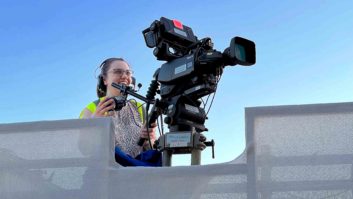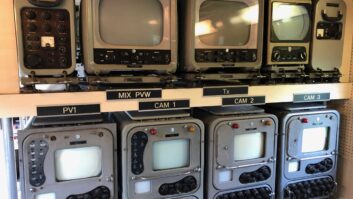
IBC sees the official launch of a modem that Novelsat believes will significantly change the way that newsgathering is achieved.
Novelsat’s NS3000D modem incorporates its NS3 technology, which is claimed to increase satellite bandwidth capacity by anything between 20 and 50%.
NS3 has already been deployed by organisations such as the European Broadcasting Union to distribute live sports broadcasts during the Euro soccer championships.
“We have saved them significant amounts of money because they used about one third of the bandwidth that they would normally have been required to transmit,” claimed NovelSat Chairman, David Furstenberg (pictured).
The technology will be deployed again by the EBU and other broadcasters for the 3D coverage of the Olympics.
The new modem offers the ability to increase available bandwidth or reduce costs for satellite video transmission, while its dual channel capability permits outside broadcasters to simultaneously send and receive data, at speeds of up to 716Mbps, while transmitting live video streams.
The amount of bandwidth provided by a satellite is controlled by the modulation and demodulation equipment on the ground and is typically sited at the satellite head end or in the SNG truck.
“A small DSNG vehicle will have capability to transmit in 4.5MHz segments but this limits them to use only SD,” Furstenberg explained. “I know many news agencies like Sky are requiring their providers to deliver news in HD so basically the only way that DSNG can be broadcast in HD today is by using 9MHz. We have the first technology that enables them to use 4.5MHz yet transmit HD or to transmit SD, but from two cameras simultaneously (eg one camera on a reporter and another on the scene itself).”
He said that a test transmission between Toronto and Las Vegas had achieved a bandwidth saving of 47%.
“Outside broadcasters and DSNG newsgathering organisations face a number of challenges including the cost of bandwidth. What we are able to do is reduce this cost dramatically. We are enabling and helping the financial side of broadcasting by making it more profitable financially.”
There are other advantages too, he said. “When you have our modem inside a truck it enables the studio to control the functionality inside the truck without need for any additional bandwidth or for technicians to be physically present. It doesn’t cost the broadcaster anything to have this type of connectivity and they gain full control.
“You can use a 35% smaller antenna in the truck, which is most important for flyaways, and still get the same throughput, plus you have the built-in ability to transmit in video or IP.”
By Adrian Pennington






